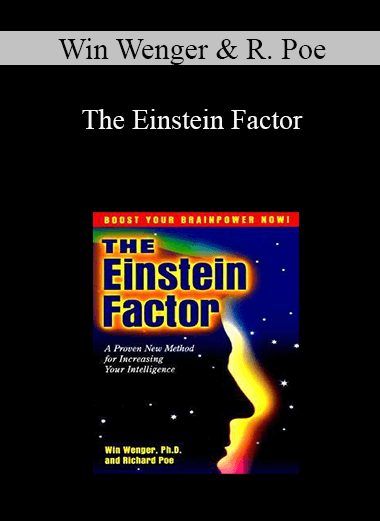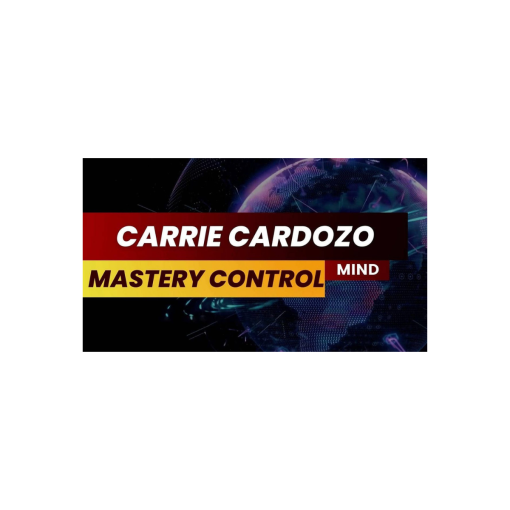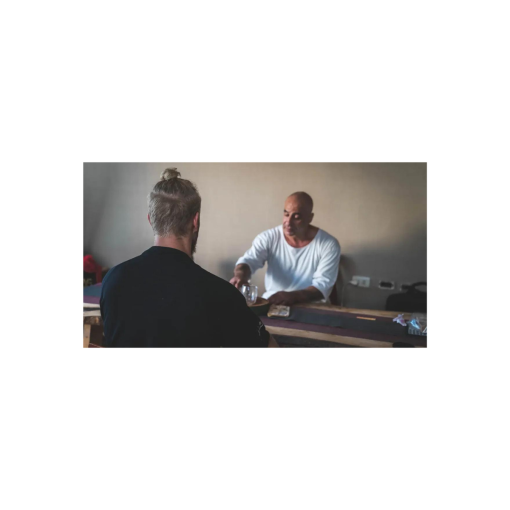The Einstein Factor
‘The Einstein Factor’, co-authored by Win Wenger & Richard Poe is about the findings of “The Project Renaissance Program” for accelerated learning. The program is aimed at developing accelerated learning techniques and is the result of 25 years of research in this field. The authors like Dr Thomas Harvey try to probe into the secrets of Einstein’s genius. Dr Harvey studied Einstein’s brain, which he secretly extracted while conducting his autopsy, where as the authors try to understand his thought.
Einstein differed from us in two things; his capacity for ingenious thought and the large number of glial cells and inter connections in his brain. The authors say that truly ingenious thought occurs in a realm wholly unlike that which our conscious mind can grasp, free from ordinary perceptions that most of us think unbreakable, playing havoc with commonplace notions of time, space & form. Faraday, who could not understand Math, suspended the need to understand and simply acknowledged the thoughts that came to his mind. He pictured lines of force to be like rubber bands. Einstein remarked of Faraday’s discovery of electromagnetism, “This discovery was an audacious mental creation, which we owe chiefly to the fact that Faraday never went to school, and therefore preserved the rare gift of thinking freely.” A child generally has the ability to think freely. However, as we grow in age, we are taught to distrust our own judgment and perceptions and to depend on the opinion of experts.
Many of the great scientists and inventors were not conventionally ‘bright’ in their early life or in academics. In fact, the renowned mathematician Henri Poincare scored so low in the Binet IQ Test as to be considered ‘imbecile’. Thomas Edison, who holds a record for his 1093 patents, was notoriously slow in school. Albert Einstein was considered a dullard and had difficulty in speech and reading due to his dyslexia.
What is the Einstein Factor?
Win Wenger & Poe identify the ability for ingenious thought as the mark of genius and attempt to liberate the genius in every one, (which they term the Einstein Factor), through the methods of Image Streaming, Photo Reading, Free Noting & Borrowed Genius etc. According to the authors, our subconscious mind is a vast storehouse of perceptions and knowledge but our defensive mechanisms and training ‘squelch’ edit the intrusion of the feedback from subconscious into the conscious realm. We often see what we expect to see or what we are trained to see and reject truths that our conscious mind finds unacceptable. This is what Churchill meant when he said, “Most men stumble over great discoveries. But most then pick themselves up and walk away”. The techniques in this book are aimed at squelching the squelcher and tapping the reservoirs of the subconscious mind. Simultaneously, it aims to develop the power of our brain.
Though brain cells do not reproduce, the size of the brain and IQ can increase through a stimulus, which causes forests of new connections to sprout between brain cells in the form of dendrites, axons and glial cells. It is the number of interconnections between neurons that is the real measure of genius as proven by scientific studies. The Image Streaming Technique is meant to reinforce and enhance the interconnections in the brain and at the same time swamp the ‘squelcher’ through overloading so that the original perceptions from the subconscious can enter the conscious mind.
Image streaming:
Image streaming is based on the fact that 58% of our time is spent in passive reception of subconscious imagery through dreaming as well as daydreaming. To image stream, you relax with closed eyes and then you describe aloud either into a tape recorder or a person, the image stream that appears to you. The image streamer talks, listens to himself, sees, smells tastes feels, analyses, reflects, wonders and generates mental imagery, thus performing many activities simultaneously. This overloads the conventional attention pathways to the brain and jams the ‘squelcher’. This unusual combination of activities also spans many opposite poles of the brain thus pole-bridging the brain’s analytical left hemisphere and its creative right hemisphere. In this mode, the messages of the subconscious manage to sneak past the conventional editing defenses and seep into the conscious mind. You get answers to questions that you are conscious of and also other information that are of vital importance but which are not in your conscious awareness.
Image streaming can also be used effectively to “instant replay” an event or a conversation. The more times you replay, the more insights you receive on the event.
Photoreading:
In today’s fast changing world, everyone is a perpetual learner as today’s skill is technologically obsolete tomorrow. The most competitive workers will be those who have mastered the ‘metaskills’, the basic skills, which empower them to learn new skills faster. Memory is the ultimate metaskill.
All of us possess photographic memory to some degree. The ‘photoreading’ technique developed by Paul Scheele in the USA is aimed at leveraging this asset to accelerate learning. It involves skimming pages as they appear before you in a Right Brain activated theta state. The information is then given an incubation period, preferably in sleep. The contents, the authors claim, will be comprehended to a large degree. In today’s competitive world, with the need to master left-brain skills such as advanced mathematics, vocabulary, jargon & current information to maintain your market value. photoreading skill is an asset. However, you only swallow; not chew or relish the matter.
Borrowed genius:
Soviet psychiatrist Dr. Vladimir Raikov developed a method called artificial reincarnation in which he used deep hypnosis to make people think that they had virtually become some great genius in history. The reincarnated subjects could, under hypnosis, produce creations that were far superior to that which they had produced prior to their reincarnation. Even after the sessions, the residual effects left a positive impact in their talents. The borrowed genius technique of Wenger & Poe does not involve hypnosis, but relies on the Raikov effect to improve creativity. The subject puts on a genius in imagination, and then debriefing back to self. This leaves a positive measurable impact on his creative talents. The success of this method is the product of the infinite capacity of the human mind for dissociation – splitting of into discreet personalities within the same brain. Geniuses have long used this technique of symbolically borrowing other people’s identities as a tool for sparking creativity. Disney became Mickey & General George S Patton considered himself the reincarnation of great generals of the past.
Freenoting:
This technique is based on our need to express ourselves, which is as basic as our need for food or sex. Self-expression helps us articulate our thoughts and feelings and as we articulate, we get clearer insights into the problem on hand. By progression on the same line, we manage to eliminate our cognitive dissonance or any inconsistencies of thoughts or ideas on the subject. This is the Socratic method of education adapted as an accelerated learning strategy. It is of interest to note here that it is also possible to brainwash people using this strategy through imperceptibly guiding the subject’s discursion on a lop-sided path to a partial truth. As the subject has generated the views himself, he is convinced of its infallibility.
The authors also touch on brainstorming, hidden question and other strategies that have been developed by De Bono and others in the field of accelerated learning. They also stress factors such as the effect of Oxygen, stimulating environment etc on the brain. Music, especially Mozart, Gerogian chants, Barouche etc with beats approximating 60 per minute, is a brain re-charger.
It is ‘memes’ not genes that make you a genius. ‘Memes’ are those patterns of thoughts habits & emotions woven into the mind by the people and events around us. Religion, according to them is one such meme. The book aims to help us activate our genius memes and not to be a meme-oid i.e. a person so deeply in the grip of a meme that they lose all common sense and deteriorate to fanaticism.
The authors do not presume to find the reason for the effectiveness of these techniques, some of which produce results almost like psi (clairvoyance & telepathy). They admit that we are still far from understanding the magnitude and range of our subliminal perceptions. The range of conscious human perception is extremely limited and it limits our ideas about reality. This idea is as old as Plato or perhaps as old as our myths and religions, which allegorically tries to explain a wider transcendent reality.
The book is interesting and gives us several insights through anecdotes about the strange events and insights that preceded some of the great discoveries and inventions like the theory or relativity, electromagnetism and the sewing machine. The authors clearly believe that a genius is not born, but made. The techniques are described in great detail and though they seem simple are complex enough to need the support of a skilled or interested partner. The theories and hypotheses are backed to some extent by conventional psychology and carry similarities to Jungian concepts. However, methods such as image streaming, borrowed genius etc are bound to raise more skepticism and suspicion than acceptance among the readers. We are all ‘set thinkers’. But let us be open -minded about the Einstein Factor. After all, had not Lord William Thomas Kelvin, President of England’s Royal Society asserted “X-rays will prove to be a hoax” when Wilhelm Roentgen announced in 1895 that he had discovered a mysterious form of energy that could pass right through people’s bodies and make photos of their bones?
Get download Win Wenger & Richard Poe – The Einstein Factor at coursesblock.com right now!
Delivery Method
– After your purchase, you’ll see a View your orders link which goes to the Downloads page. Here, you can download all the files associated with your order.
– Downloads are available once your payment is confirmed, we’ll also send you a download notification email separate from any transaction notification emails you receive from coursesblock.com.
– Since it is a digital copy, our suggestion is to download and save it to your hard drive. In case the link is broken for any reason, please contact us and we will resend the new download link.
– If you cannot find the download link, please don’t worry about that. We will update and notify you as soon as possible at 8:00 AM – 8:00 PM (UTC 8).
Thank You For Shopping With Us!







